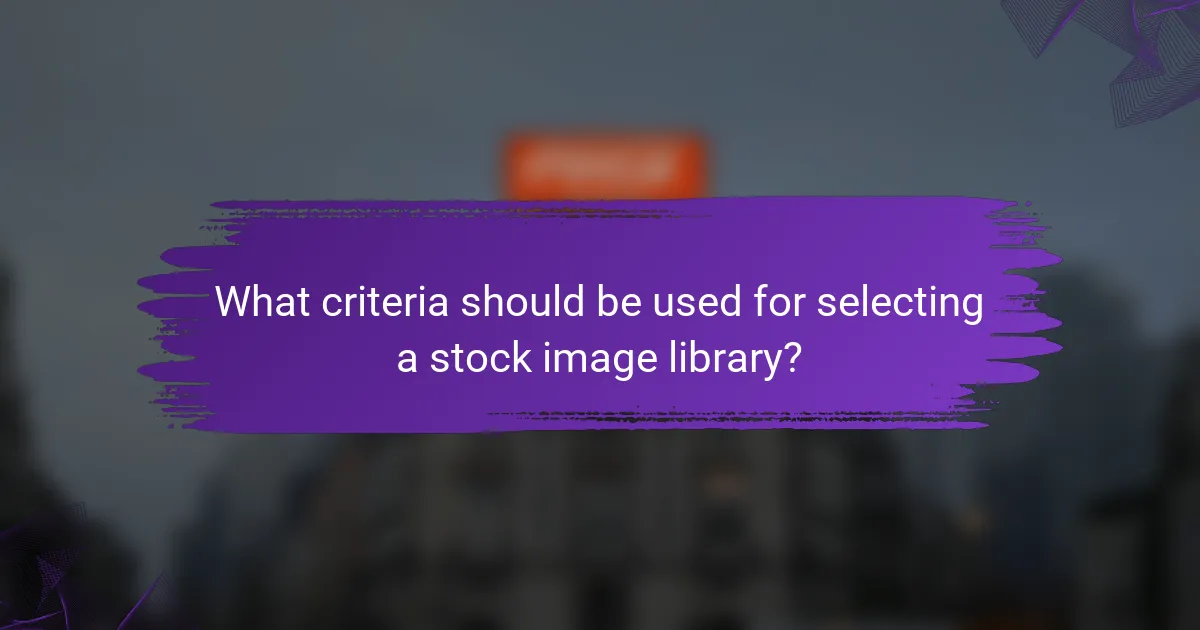Evaluating the search functionality in stock image libraries is crucial for determining how effectively users can locate relevant images. Factors such as user interface design, search algorithms, and filtering options play a significant role in enhancing the efficiency of image discovery across various platforms.

How to evaluate search functionality in stock image libraries?
Evaluating search functionality in stock image libraries involves assessing how effectively users can find relevant images. Key factors include user interface design, search algorithms, filtering options, result relevance, and overall speed and performance.
Assess user interface design
The user interface (UI) design significantly impacts how easily users can navigate a stock image library. A clean, intuitive layout with clear categories and search bars enhances user experience. Look for features like breadcrumb navigation and responsive design that adapt to different devices.
Consider the visual hierarchy of elements. Important functions, such as search bars and filters, should be prominently displayed. A well-organized UI reduces the time users spend searching for images, improving overall efficiency.
Analyze search algorithms
Search algorithms determine how effectively a library retrieves images based on user queries. Evaluate whether the library uses keyword matching, semantic search, or machine learning techniques to improve accuracy. A robust algorithm should return relevant results even with vague or incomplete search terms.
Check for features like auto-suggestions and synonyms that enhance search capabilities. Libraries that incorporate advanced algorithms often provide a better user experience by delivering more precise results quickly.
Review filtering options
Filtering options allow users to narrow down search results based on specific criteria, such as image type, orientation, color, and license type. Comprehensive filtering can significantly enhance the search experience by helping users find exactly what they need without sifting through irrelevant images.
Evaluate the range and flexibility of filters available. Libraries that offer multiple filtering criteria and allow combinations of filters tend to be more efficient, catering to diverse user needs.
Examine result relevance
Result relevance is crucial for user satisfaction. Assess how well the images returned match the search terms and user intent. A good stock image library should prioritize the most relevant images at the top of the results list.
Consider conducting user tests to gather feedback on result relevance. This can help identify any gaps in the search functionality and areas for improvement, ensuring users find images that meet their expectations.
Test speed and performance
Speed and performance are essential for a smooth search experience. Evaluate how quickly the library returns results after a search query. Ideally, results should load within a few seconds, even with complex queries or large datasets.
Check for performance consistency across different devices and internet speeds. A library that maintains quick load times under various conditions is more likely to keep users engaged and satisfied with their search experience.

What are the best stock image libraries for efficient search?
The best stock image libraries for efficient search include Adobe Stock, Shutterstock, Getty Images, and iStock. These platforms offer advanced search functionalities, extensive image collections, and user-friendly interfaces that enhance the image discovery process.
Adobe Stock
Adobe Stock provides a seamless search experience integrated with Adobe Creative Cloud applications. Users can filter results by various criteria such as orientation, color, and image type, making it easier to find specific images quickly.
One notable feature is the ability to search using keywords and visual similarity, which helps in discovering images that match a particular style or theme. Adobe Stock operates on a subscription model, with pricing options that cater to different usage needs.
Shutterstock
Shutterstock is renowned for its vast library and robust search capabilities, allowing users to refine searches using filters like image size, color, and licensing type. The platform’s AI-driven search suggestions can enhance the efficiency of finding relevant images.
Shutterstock also offers a flexible pricing structure, including subscription plans and on-demand purchases, making it accessible for both occasional users and professionals. Users should be mindful of the licensing terms to ensure compliance with usage rights.
Getty Images
Getty Images is a premium stock image library known for high-quality content and extensive editorial options. Its search functionality allows users to filter by categories such as news, sports, and entertainment, which is particularly useful for media professionals.
While Getty Images tends to be on the pricier side, the quality and exclusivity of its images can justify the cost for businesses needing unique visuals. Users should carefully review licensing agreements, as they vary significantly based on the intended use.
iStock
iStock, a subsidiary of Getty Images, offers a more budget-friendly alternative with a wide range of stock photos, illustrations, and videos. Its search engine is user-friendly, featuring filters for image type, orientation, and even price range.
iStock operates on a credit-based system, allowing users to purchase images individually or through subscription plans. This flexibility makes it a popular choice for small businesses and freelancers looking for cost-effective solutions without sacrificing quality.

How do subscription models affect access to search features?
Subscription models significantly influence access to search features in stock image libraries. Users often find that higher-tier plans provide enhanced search functionalities, including advanced filtering options and access to exclusive content.
Tiered pricing structures
Many stock image libraries utilize tiered pricing structures that impact the available search features. Basic plans typically offer limited search capabilities, while premium tiers unlock advanced options such as keyword suggestions and refined filtering by image type or orientation. For example, a basic subscription may only allow searches by keyword, whereas a premium plan might enable searches by color or license type.
When selecting a subscription, consider how often you will use the library and the complexity of your search needs. If you frequently require specific images, investing in a higher tier could save time and improve efficiency.
Access to premium content
Access to premium content is often restricted to higher subscription tiers, which can affect search functionality. Users on lower-tier plans may find that their search results are limited to basic or less popular images, while premium subscribers can access a wider array of high-quality visuals. This can be crucial for projects requiring unique or specialized imagery.
Evaluate the types of images you need and whether they are likely to be available in the lower tiers. If your work demands high-quality or exclusive images, a premium subscription may be necessary.
Limitations on downloads
Limitations on downloads can also affect how users interact with search features. Many subscription models impose a cap on the number of images that can be downloaded per month, which can restrict the effectiveness of the search function. For instance, a basic plan might allow only a handful of downloads, limiting the ability to explore and utilize various images found through searches.
When choosing a subscription, consider your download needs alongside search capabilities. If you anticipate needing multiple images for a project, opt for a plan that offers higher download limits to maximize the utility of the search features.

What criteria should be used for selecting a stock image library?
When selecting a stock image library, consider search functionality, image quality, and licensing terms. These criteria ensure that you can efficiently find high-quality images that meet your project’s legal requirements.
Search functionality
Effective search functionality is crucial for quickly locating the right images. Look for libraries that offer advanced filters, such as color, orientation, and image type, to narrow down your options efficiently.
Additionally, consider the search speed and accuracy. A good stock image library should return relevant results in a matter of seconds and allow for keyword variations to enhance your search experience.
Image quality
Image quality varies significantly across stock image libraries. Prioritize platforms that provide high-resolution images suitable for both digital and print use, typically starting at 300 DPI for print projects.
Check for the availability of curated collections or editor’s picks, as these often highlight the best images in terms of composition and technical quality. Reading user reviews can also give insights into the overall image quality offered by the library.
Licensing terms
Understanding licensing terms is essential to avoid legal issues. Look for libraries that clearly outline usage rights, including whether images can be used for commercial purposes or require attribution.
Some libraries offer royalty-free images, allowing for broader usage without additional fees, while others may have more restrictive licensing. Always read the fine print to ensure compliance with the terms of use.
